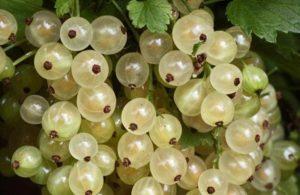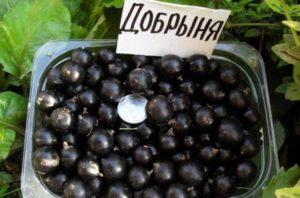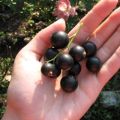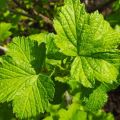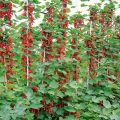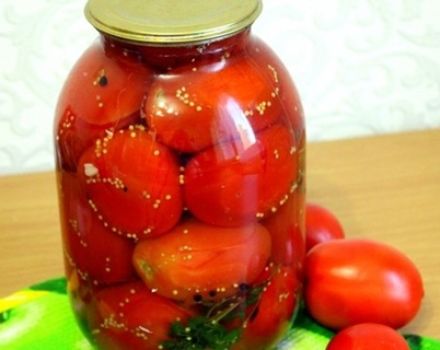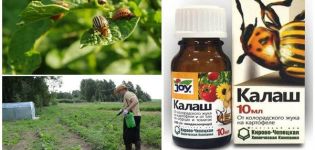Description and characteristics of the currant variety Lazy, planting and care
A variety of black currant Lazybones has become widespread among gardeners. The berry crop yields a large harvest and does not require specific care. The sweet and aromatic fruit is versatile and suitable for fresh consumption, processing and freezing.
Breeding history of the variety
The Lazytay variety was bred in the early 90s through hybridization of the Bradthorpe and Minai Shmyrev species. It was possible to open the Lazybear currant as a result of long-term breeding developments.
Description and characteristics of black currant Lazy
Lazy currant has a number of characteristic qualities and features that you should familiarize yourself with when planting. Information about the appearance will help to track the correct development of shrubs.
Leaves
Tall and medium spreading currant bushes Lazybones are thickened with foliage almost along the entire length of the stem. The leaves are five-lobed, large, rich green, with a smooth and slightly wrinkled surface.
Flowers
Flowers on currant plants are bell-shaped, sepals are reddish in color. Racemes are oblong, up to 8 cm long, inclined to the ground, with slight pubescence.
Productivity and fruits
The name of the Lazytay variety was given due to the late ripening period. The harvest begins to ripen towards the end of the summer period. The berries are dark in color with a slight brownish tint. The weight of large currant fruits is about 2.5 g, the diameter is from 0.7 to 1.5 cm. The shape of the berries is round, the stem is medium-sized, slightly bent. The taste of currants is sweet with a slight sourness, pronounced aroma. The pulp of the crop is rich, the skin is thin.
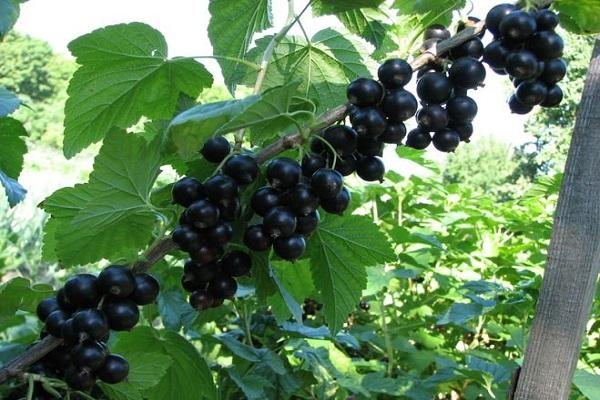
The advantages and disadvantages of culture
Positive and negative sides are characteristic of the Lazybird berry variety. The list of the main benefits of culture includes the following:
- high rate of winter hardiness;
- regular and abundant productivity;
- universal purpose of fruits;
- the ability to pollinate independently;
- resistance to common diseases.
Among the disadvantages of the Lazybones variety, it is worth noting the uneven ripening of berries, a low level of transportability due to the fragile skin, shedding of unripe fruits. In order not to lose a significant part of the crop, the listed disadvantages should be taken into account in the growing process.
How to plant a plant on a site
When planting a Lazy currant, a number of nuances must be observed. To get a good harvest, it is important to choose the optimal time for planting, prepare a place in the summer cottage and step by step carry out the technology for transferring seedlings to the soil.
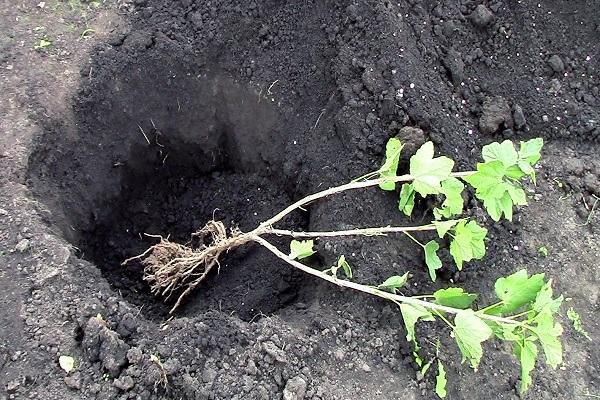
The best timing for planting
It is recommended to transfer seedlings of black currant Lazy to the ground in the second half of October, before the onset of the first frost. During the winter period, the plants will adapt to new conditions and the roots will firmly compact in the ground. In the spring, after most of the snow has melted, young shoots will begin to actively grow.
Choosing the best place
The site for planting a currant culture should be constantly illuminated, since the effect of ultraviolet rays on the bushes has a beneficial effect on the taste and quantity of the crop. The best place on the site is a line along the fence or building, protected from blowing through. If the site is located in an elevated area, it is better to plant bushes in the central or lower part of the slope.
Suitable precursors for Lazybones are green manure, legumes and winter rye. For the Lazybones variety, a slightly acidic soil of loamy, slightly podzolic or sandy loamy type is required.

Preparing the soil and planting hole
Having chosen a place for placing seedlings, it is necessary to prepare the soil for the rapid rooting of plants. The process of preparing the landing pit requires the following steps:
- Clear the area of weeds, debris and plant debris.
- A couple of weeks before planting, treat the soil with rotted manure or compost, superphosphate, potassium.
- Dig holes to accommodate currant seedlings up to 50 cm deep and twice the diameter of the roots. The distance between the pits should be 1-1.5 m between each other and 2.5-3 m between the rows.
- Sprinkle the bottom of the holes with chalk, wood ash, dried plaster or shells in order to lime the acidified soil.
- Wait 2-3 weeks and plant currant bushes.
Planting technology of seedlings
Before transferring currant seedlings to the ground, the plant roots are kept in warm water to soften. Immediately before planting, the pits are moistened. Currant seedlings are placed in the holes at a slight angle and the roots are evenly distributed at the bottom. Leave the root collar at a level of 5-7 cm below the soil level. The plants are sprinkled with earth mixed with rotted manure, and the root area is watered. To retain moisture in the soil and protect plants, the hole is covered with a layer of mulch 5-8 cm from straw, peat, coniferous branches. The ground part of the seedlings is pruned, leaving 3-4 powerful buds.

Crop care rules
The key to a stable large harvest is the comprehensive care of currant bushes. The Lazybear variety requires the correct implementation of agrotechnical techniques during the entire growing season.
Irrigation of bushes
From spring to the second half of summer, currant plants are watered regularly as the earth dries up. As a rule, it is sufficient to irrigate 2-3 times a week. The greatest need for moisture occurs during the period of active fruiting, when buds are formed for the next season. Insufficient watering can cause a reduction in the number of ovaries.
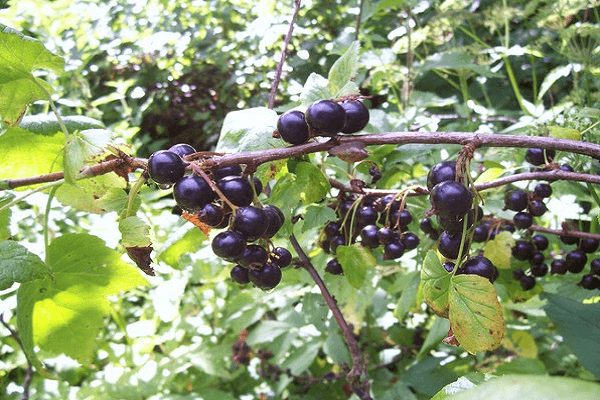
Fertilizer
The first portion of fertilizer is applied before the transfer of currant seedlings to the holes. In mid-spring, the bushes are fed with nitrogen fertilizer. For each bush, 40-50 g are used, diluted in 10 liters of water. In autumn, a more thorough fertilization is carried out with the following components:
- organic matter (humus, horse humus);
- double superphosphate;
- potassium sulfate or wood ash.
Nitrogen fertilization is carried out annually. Organic substances and phosphorus-potassium fertilizers are used depending on the composition of the soil at the site.
Shaping and pruning
Pruning bushes helps to increase yields and protect against disease and pest attacks. It is necessary to form currants before budding or harvesting, before the onset of the first frost. During pruning, old, undeveloped, damaged branches and shoots are removed, which continue to absorb nutrients.
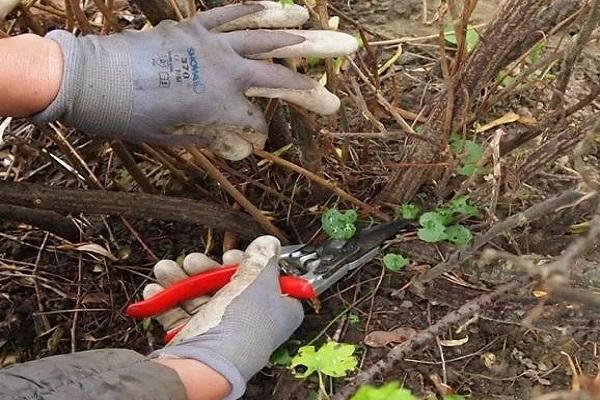
In the third year of growth of the bushes, when a large number of new branches are formed, the 5 most powerful branches are left for further development. In the next season, the skeletal shoots are pruned for rejuvenating and sanitary purposes.
Disease prevention
Despite the resistance of the Lazybones variety to the effects of many diseases and harmful insects, adverse environmental conditions can lead to plant damage. During the cultivation of currants, it is necessary to regularly inspect the bushes so as not to miss signs of the development of infections or gnawing of the ground part by pests.
To protect plants, it is recommended to periodically carry out preventive actions. The most effective way is to spray the plantings with insecticides and fungicides. In addition to using specialized tools, it is required to remove and burn fallen leaves, loosen the soil under the bushes and carry out mulching.

Cooking currants for winter
Before the onset of winter, currant bushes need to be prepared for the upcoming cold weather. Covering work is carried out after freezing of the earth and the formation of a crust on the surface. First, you need to tie the bushes with twine from the bottom to the top of the stem to prevent the branches from breaking from the weight of the snow. The space around the plantings is cleared of plant debris so that harmful microorganisms do not remain in them for the winter. From above, the bush is covered with a thick cloth, burlap or polyethylene.
Reviews of gardeners about the variety
Leonid: “It is not the first season that I have grown the variety Lazy, always happy with the harvest. Sometimes there are difficulties in leaving, but this does not affect the taste of the berries. "
Anna: “I planted this variety on the recommendation of a friend and did not regret it. The harvest is large, the berries are very sweet. There were no problems with growing. "
